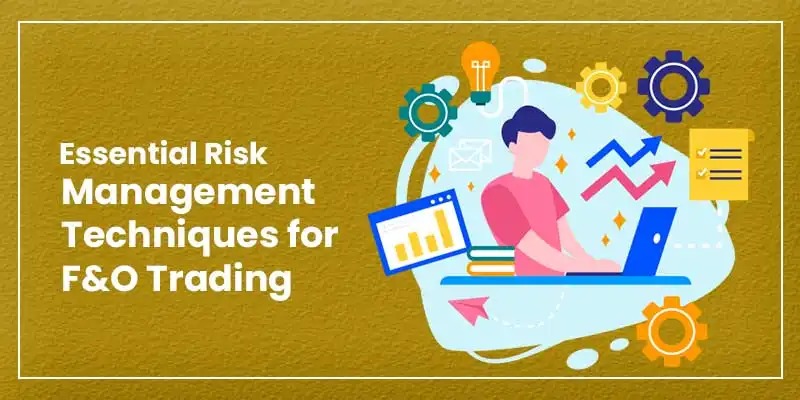Futures and Options (F&O) trading offers opportunities but also involves significant risks. Effective risk management is essential to navigating market fluctuations and protecting capital. This article explores key risk management techniques tailored for F&O trading, helping traders manage their exposure in dynamic market conditions.
Contents
- Stop Loss Orders and Predefined Risk Limits
- Option Hedging Strategies
- Position Sizing and Exposure Control
- Portfolio Margin Management
- Volatility-Based Risk Assessment
- Time Decay and Theta Management
- Conclusion
- FAQs
Stop Loss Orders and Predefined Risk Limits
Stop-loss orders are an essential risk management tool in F&O trading. These predefined levels help traders limit potential losses in case of adverse market movements. By setting stop-loss limits based on market trends and volatility indicators, traders can manage their exposure effectively. The approach uses economic indicators or volatility measures to set stop-loss levels to ensure that risk stays at a certain level.
Read Also: Analyzing Market Trends For Options Trading In India
Option Hedging Strategies
Options provide traders with various hedging strategies to mitigate risks in F&O trading. Traders can use protective puts, which involve keeping an option that protects a long position from bad price changes. In the same way, traders can lower their risk while still participating in possible growth with call spreads and straddles. Picking a hedging plan that fits with the overall market outlook and your particular risk is very important.
Position Sizing and Exposure Control
Position sizing is a key aspect of F&O risk management, ensuring that no single trade significantly impacts the overall portfolio. Traders can use a fixed percentage of their capital per trade to manage risk effectively and prevent overexposure. Traders can keep their method fair by using a set risk percentage to calculate the appropriate amount of capital for each trade. This method requires a lot of careful math and constant changes as market conditions change. It helps keep the level of risk within accepted limits.
Portfolio Margin Management
Managing margin requirements is crucial in F&O trading, as market volatility can impact margin calls. Traders should regularly monitor margin levels and adjust their positions accordingly to maintain sufficient collateral and avoid forced liquidations. When traders add margin figures to their risk management system, they can avoid margin calls and having to sell their trades. When using this method, you should be strategic and regularly check the portfolio’s collateralization to ensure it stays high enough.
Volatility-Based Risk Assessment
Volatility plays a critical role in F&O markets, influencing options pricing and market risk. Traders can assess risk using historical and implied volatility indicators, such as the Average True Range (ATR) and the Volatility Index (VIX), to make informed decisions on trade positioning. With this method, you can change the stop loss levels and choose the right hedging options. It makes sure that the framework for risk management changes with the market.
Time Decay and Theta Management
Theta represents time decay in options trading, which causes an option’s value to decrease as it nears expiration.Traders must account for time decay when managing positions, especially in long-term options strategies.
Read Also: The Mechanics Of Options Settlement
Conclusion
Effective risk management in F&O trading requires a combination of strategies, including stop-loss orders, hedging techniques, and portfolio margin management. Regular monitoring and adjustments based on market conditions can help traders mitigate risks and improve decision-making.
Disclaimer: Investments in the securities market are subject to market risks; read all the related documents carefully before investing.
FAQs
Trend analysis helps traders identify key support and resistance levels, assess market volatility, and refine their risk management strategies by setting appropriate stop-loss and entry points.
Yes, many risk management principles apply across different markets. However, F&O trading requires additional considerations due to leverage, margin requirements, and options pricing dynamics.
Traders should review risk management strategies regularly, especially after major economic events or changes in market conditions, to ensure alignment with current trends and volatility levels.

